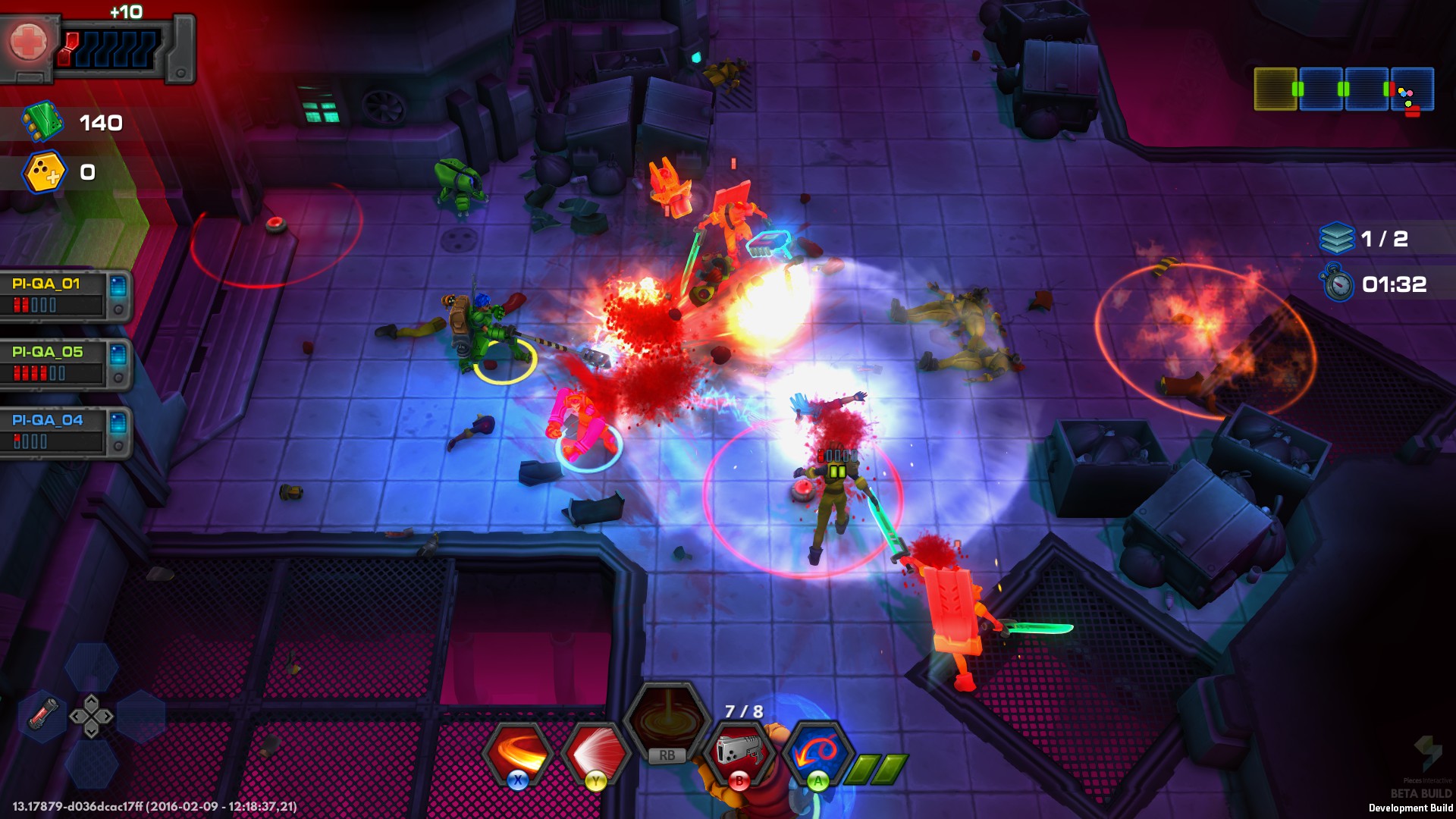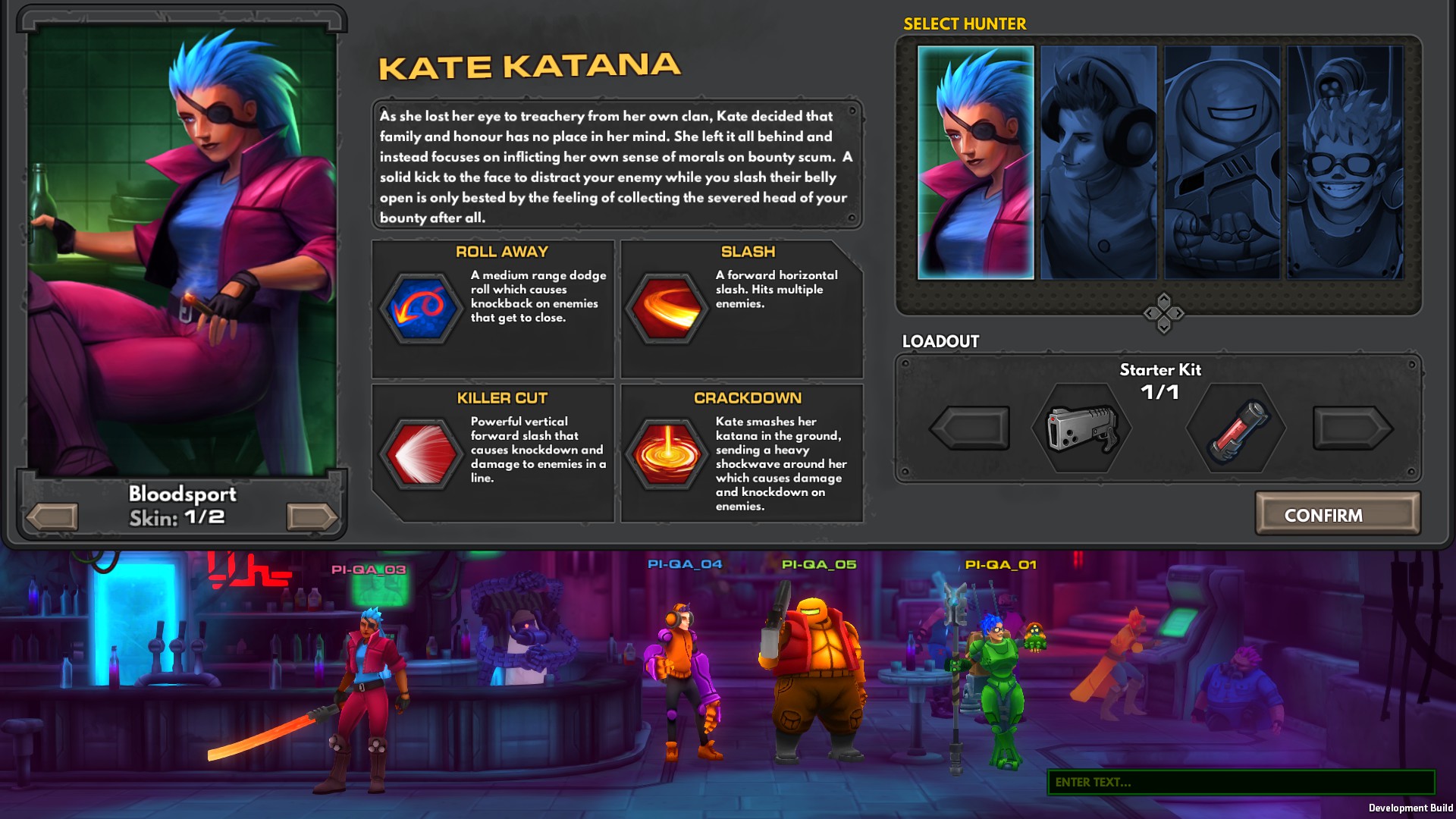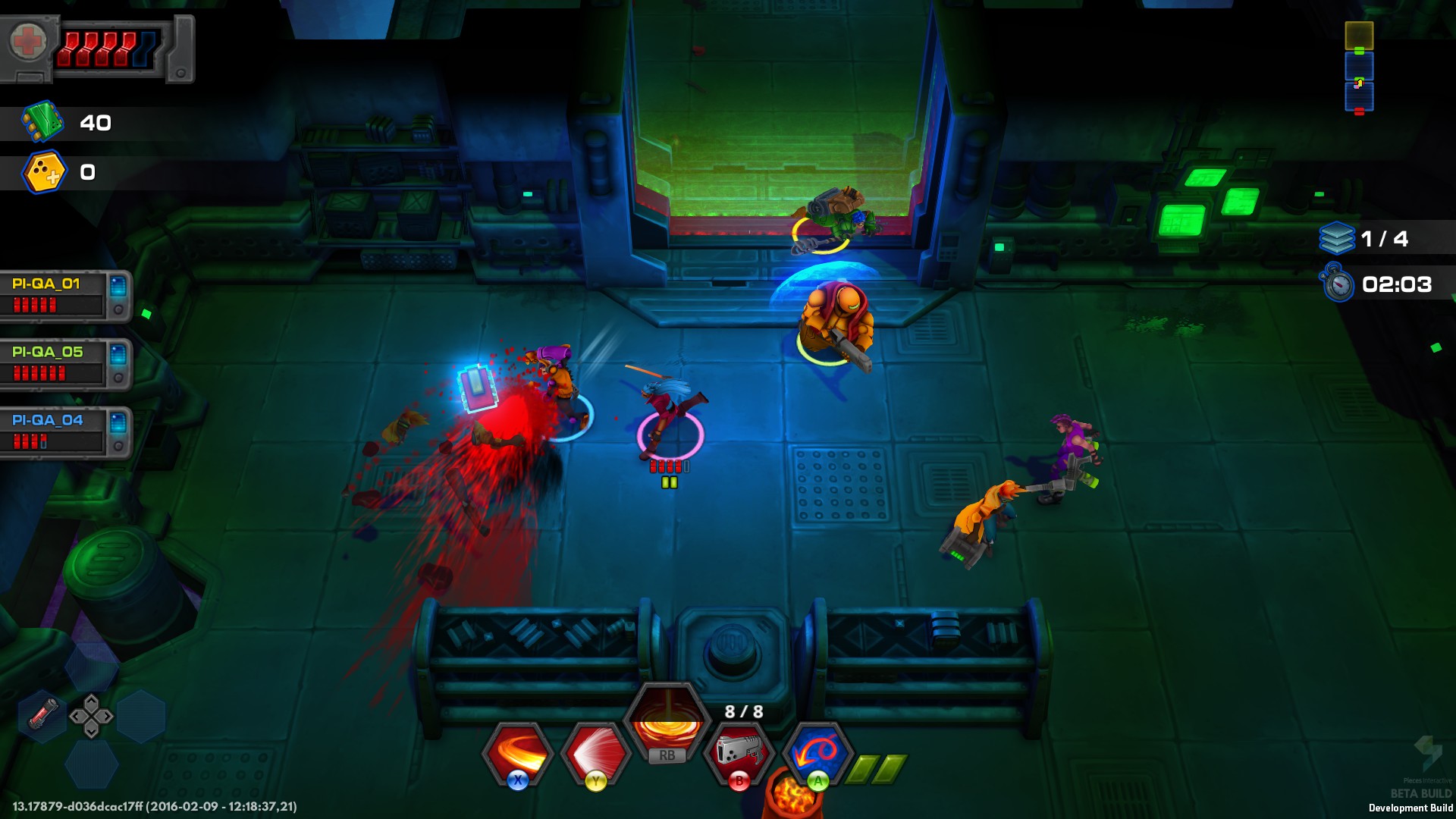
Co-Optimus: As we've only seen bits and pieces of the game in action at this point, would you mind walking us through an average five minute session of the game? What happens; what are players doing; why?
David: Sure, my pleasure. A bounty takes about 10-15 minutes so I will divert a bit from the scope of the question if you don’t mind. You gather your friends in the lobby or go solo after a bounty target somewhere down in Geoshelter Alpha - our setting, which is a dangerous and dystopian world that is the last known city on Earth. Room by room you will make your way closer to your target, with each room presenting a different challenge of enemies and environments. The moment to moment gameplay is all about learning the attack patterns of the enemies, striking when the opportunity arises, and dodging to avoid trouble when it gets too hot. Timing and placement are key. Each floor ends in an elevator room where you can buff yourself with snacks from the food dispenser, replenish ammo and health, and maybe pick-up a power up or two. On the last floor your bounty awaits, accompanied by a few faithful underlings.
Co-Optimus: I read in another interview that some of the minute-to-minute action was inspired by titles like The Binding of Isaac and Spelunky. What is it about those games, and/or their mechanics, in particular that you found inspiring?
David: From The Binding of Isaac, I would say the most important thing is the concept of going into a room, seeing the challenge, and approaching it with a strategy. The influences from Spelunky are a bit more vague. We like the Spelunky definition of a rogue-like (and Binding of Isaac) and how both incorporate challenges with leaderboards.
Co-Optimus: In the same interview, I read that you were also inspired by the board game "DungeonQuest." I've never played the game, but one of my favorite board games growing up was "HeroQuest," which seems to share some similar ideas. What concepts/idea did you draw from this?
David: This game would never have existed if DungeonQuest didn’t. That game was as close to procedurally generated dungeons as you can get in the analog world, and it was harsh. Those two elements have been taken to heart.

Co-Optimus: What is Kill to Collect's co-op experience like? Will players essentially be just another gun/katana for their friend, or is there something more? What do you think will make "Kill to Collect’s co-op good?
David: We definitely wanted the co-op to go further than “just another gun/katana,” but at the same time be functionable as a single player experience as well. Having gameplay that promotes co-op but doesn’t force it is important for us. Evoking collaborative emotions are just as important as actual features for creating a good co-op experience. From a feature perspective, each character is designed with a slight skew towards a particular role, but not enough to where they require a friend to function. However, some items, like the chain cutter, are best used with a friend, and some enemies are easier to conquer with an extra hand. Certain buffs will also affect the whole team (vs. just yourself) if you stick together.
Most of the characters’ defensive abilities can be used to aid your friends, and teams that work together definitely have better results. You also have the chance to revive your dead friends through the “down but not out” feature. We didn’t want to create a situation where some players just wait to play for too long or create incentives for the others to abort the mission and start over.
We saw this game having an emotional teamwork perspective, so with that, we wanted to incentivize players to work together to be further invested in game advancement. The main resources, tech and food stamps, are always divided equally regardless of who makes the kill. We also tried to simplify and streamline the game’s flow to decrease any waiting. Obviously some players will act quickly when selecting upgrades and replenishing health in the elevator room while others will be slower, but we have chosen to go with a few simple choices over complex systems in order to decrease the risk of breaking the group’s flow.
Last but not least, we wanted a “flat entry” for all. Having overall levelling out of the individual runs often leads to friends being unable to play with friends due to the power gap. Because of this, we wanted to make sure players could join their friends for short intense sessions of fun without hours of catching up. This is key. Co-op is for playing with your friends more than anything and a game should not work against that ideal. That all being said, you can still accidentally (or purposefully) blow up your friends in game, if you want to!

Co-Optimus: Finally, I would be remiss if I didn't ask about the Jazz Boatman trailers for Leviathan: Warships. They remain, to this day, some of my favorite video game trailers of all time and I still occasionally go back to watch them. Did the idea for those come from someone in your studio and, if so, is that person now the cruising around in their own boat?
David: You and me boat then ;) Love them! [Editor's note: HA!]
We can’t take credit for the concept of that trailer. The originator of the idea was the guy who makes the trailers for Paradox, Steven Wells. I hope and trust he was well rewarded. This was before my time at Pieces but as far as I understand it, and this is well supported by my experience here since I joined, a lot of the puns in that trailer were used quite frequently in the project long before the existence of the trailer. Whether some were transferred over to this genius of a man or not, I can’t say. But I can say we’re a pretty fun-loving gang and the amount of puns and jokes flying around here are at times staggering.
We'd like to thank David and the team at Pieces Interactive once again for taking the time to speak with us about Kill to Collect. There's still no firm release date for Kill to Collect, but Pieces is anticipating it will arrive sometime this spring.